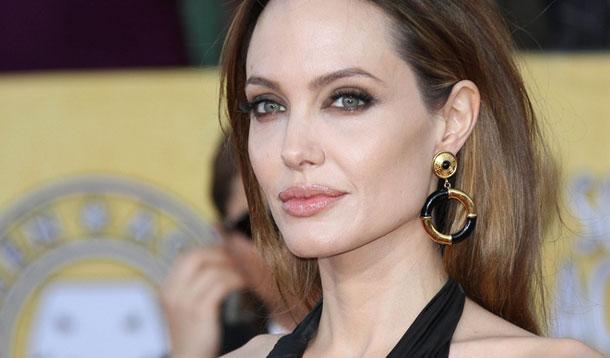
Angelina Jolie has opened up to the world—today, in a New York Times story called "My Medical Choice" that carries her byline—revealing that she just completed a series of surgeries to remove, and reconstruct, both her breasts.
Did she have cancer? No. Not yet, anyway. And therein lies the reason for her dramatic decision: she tested positive for a gene that significantly increased her lifetime risk of developing breast cancer, well above the average risk for the general population.
Jolie, 37, had the testing done because her mother battled cancer for close to ten years, and died at the tragically young age of 56. But her mother didn’t have breast cancer, she died from ovarian cancer.
Why the mastectomy, then? Well, breast cancer and ovarian cancer are linked in some cases. And the keys to that linkage are the genetic mutations known as BRCA1 and BRCA2.
So what are BRCA1 and BRCA2? Are they things you can test for? Are they things you should be tested for?
To answer those questions, The National Cancer Institute in the US has produced a very helpful Fact Sheet about these genetic mutations. In a nutshell, here’s how they explain these genetic mutations:
BRCA1 and BRCA2 are human genes that belong to a class of genes known as tumor suppressors.
A woman’s lifetime risk of developing breast and/or ovarian cancer is greatly increased if she inherits a harmful mutation in BRCA1 or BRCA2. Such a woman has an increased risk of developing breast and/or ovarian cancer at an early age (before menopause) and often has multiple, close family members who have been diagnosed with these diseases.
According to estimates of lifetime risk, about 12.0 percent of women (120 out of 1,000) in the general population will develop breast cancer sometime during their lives compared with about 60 percent of women (600 out of 1,000) who have inherited a harmful mutation in BRCA1 or BRCA2 (4, 5). In other words, a woman who has inherited a harmful mutation in BRCA1 or BRCA2 is about five times more likely to develop breast cancer than a woman who does not have such a mutation.
So Angelina Jolie tested positive for BRCA1. Which means, her choices came down to this:
Surveillance (periodic monitoring with mammograms), risk avoidance (minimizing other factors that increase breast cancer risk), preventive surgery, or chemoprevention (with medications like tamoxifen).
No doubt it was a devil of a decision. Surgery, of course, is not risk-free. There are risks of bleeding, infection, and worse any time you undergo an operation. And, it should be mentioned, her risk of breast cancer is not zero now. There still remains a small risk. But less than five percent is a whole lot better than 87%.
And that’s the tricky thing: attempting to apply sensible things like numbers and percentages to highly emotionally charged issues of life, death, illness, and motherhood.
Cancer is a frightening thing for most of us. Breast cancer, in particular, is a terrifying spectre. It’s the boogeyman under the bed. And I don’t know too many women who would choose their breasts over their life.
But how much do we really need to fear breast cancer? How likely is breast cancer for any of us? Well, the Canadian Breast Cancer Foundation has an excellent set of articles discussing just that. It’s actually a very complicated set of calculations that go into determining an individual woman’s risk, and there are many risk factors, beyond genetics, that can play a role. The Canadian Breast Cancer Foundation links to a set of scales that can be used to determine your risk. The Breast Cancer Risk Assessment Tool takes into account age, age at first period, family history, age at the first live birth of a child, and other factors. There is another tool that only takes into consideration family history and genetics, and estimates your likelihood of actually having the BRCA1 or 2 gene. If your risk on this tool is higher than 10%, genetic counseling is recommended.
Genetics, it should be said, are estimated to only account for 5-10% of all breast cancer cases. The BRCA1 and BRCA2 genes are the main known causes of these cases. Is this a test anyone can have? Can your doctor just write this up on a requisition, like checking your iron levels, or assessing your thyroid? Currently, it’s not that simple. That kind of testing has traditionally involved consultation with a genetic counsellor, and a whole lot of discussion about whether the test is warranted and what the results could mean. However, the time may come when this testing is a routine thing for everyone—I wonder, after Angelina Jolie’s story, if that time is closer than we’d expected.
If you’re concerned, if you have a strong family history of breast cancer, if you have many risk factors for breast cancer, you should talk to your doctor to discuss if genetic counseling and testing is for you.
As for Angelina Jolie's decision, I applaud it. After all, what mother wouldn’t sacrifice everything to be there for her kids?
Breasts? For me, they would be the first thing to go. I imagine they would for many of you, too.
Bravo, Angeline Jolie, for your bravery, and for opening up publicly about an extremely private issue in a very classy manner.